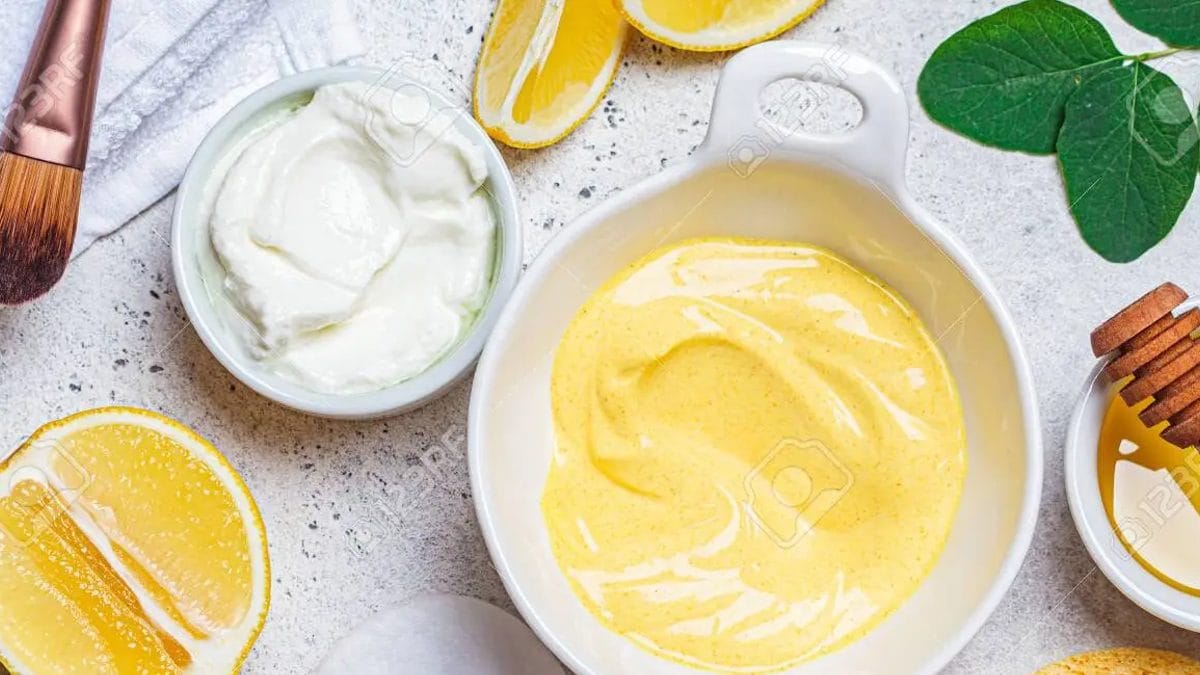Goodbye, Clogged Pores: 5 DIY Face Masks To Target Sebaceous Filaments

Although there are skincare products and expert treatments available, DIY face masks provide an easy and affordable way to clear sebaceous filaments.
DIY face masks with ingredients like charcoal and witch hazel and bentonite clay and apple cider vinegar can successfully lessen the visibility of sebaceous filaments, exposing smoother and healthier skin
Sebaceous filaments, often mistaken for blackheads, are a common skin concern faced by many. These hair-like structures reside within the pores and are essential for maintaining healthy skin. However, when clogged with excess oil, dead skin cells, and debris, they can give the appearance of enlarged pores. While professional treatments and skincare products exist, DIY face masks offer a convenient and cost-effective solution to unclog sebaceous filaments.
DIY face masks such as Bentonite Clay and Apple Cider Vinegar Mask and Charcoal and Witch Hazel Mask can effectively reduce the appearance of sebaceous filaments, revealing clearer and healthier skin.
Here is how you can prepare them:
1. Bentonite Clay and Apple Cider Vinegar Mask
Ingredients:
- 1 tablespoon bentonite clay
- 1 tablespoon apple cider vinegar
- 1-2 drops of tea tree oil (optional)
How To Make?
Mix the bentonite clay and apple cider vinegar in a non-metallic bowl until you achieve a smooth paste. Add tea tree oil for its antibacterial properties. Apply the mask evenly to your face, focusing on areas with sebaceous filaments. Allow it to dry for 15-20 minutes, then rinse off with warm water. This mask helps draw out impurities, absorb excess oil, and reduce the appearance of sebaceous filaments.
2. Honey and Yoghurt Mask
Ingredients:
- 1 tablespoon raw honey
- 1 tablespoon plain yoghurt
How To Make?
Combine the raw honey and yoghurt in a small bowl and mix thoroughly. Apply the mixture to your face and leave it on for 15-20 minutes. Rinse off with lukewarm water. Honey has antimicrobial properties that can help reduce bacteria on the skin, while yoghurt contains lactic acid, which gently exfoliates and unclogs the pores. This honey and yoghurt mask helps to minimize the appearance of sebaceous filaments and promotes a brighter complexion.
3. Oatmeal and Baking Soda Mask
Ingredients
- 1 tablespoon ground oatmeal
- 1 tablespoon baking soda
- Water (as needed)
How To Make?
Grind the oatmeal into a fine powder and mix it with baking soda in a bowl. Add water gradually to create a paste-like consistency. Apply the mask to your face and let it sit for 10-15 minutes. Gently massage in circular motions before rinsing off with warm water. This mask acts as an exfoliant, helping to remove dead skin cells and unclog sebaceous filaments, leaving your skin refreshed and smoother.
4. Green Tea and Aloe Vera Mask
Ingredients:
- 1 green tea bag
- 1 tablespoon aloe vera gel
How To Make?
Dip the green tea bag in hot water for a few minutes. Allow it to cool down, then mix the brewed green tea with aloe vera gel. Apply the mixture to your face and leave it on for 15-20 minutes. Rinse off with cool water. Green tea possesses antioxidants and anti-inflammatory properties that help to soothe the skin and minimize the appearance of sebaceous filaments, while aloe vera offers hydration and promotes skin healing.
5. Charcoal and Witch Hazel Mask
Ingredients:
- 1 activated charcoal capsule
- 1 tablespoon witch hazel
How To Make?
Open the activated charcoal capsule and mix the contents with witch hazel in a bowl until well combined. Apply the mask to your face and let it dry for 15-20 minutes. Rinse off with warm water. Activated charcoal helps draw out impurities and absorbs excess oil, while witch hazel acts as an astringent, helping to tighten the pores and reduce the appearance of sebaceous filaments.
These wallet-friendly DIY face masks offer a natural approach to addressing sebaceous filaments. It’s important to keep in mind that results may vary, and maintaining consistency is crucial. Alongside these masks, establishing a regular skincare routine that includes cleansing, exfoliating, and moisturizing can contribute to clearer and healthier skin. For persistent skin concerns or severe acne, it is recommended to seek guidance from a dermatologist who can provide professional advice and personalized treatment options.
For all the latest lifestyle News Click Here


